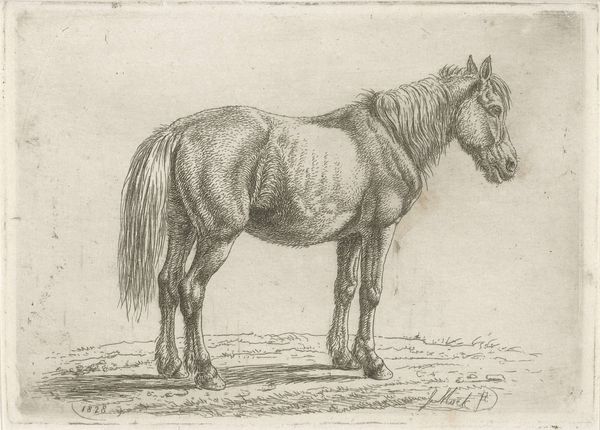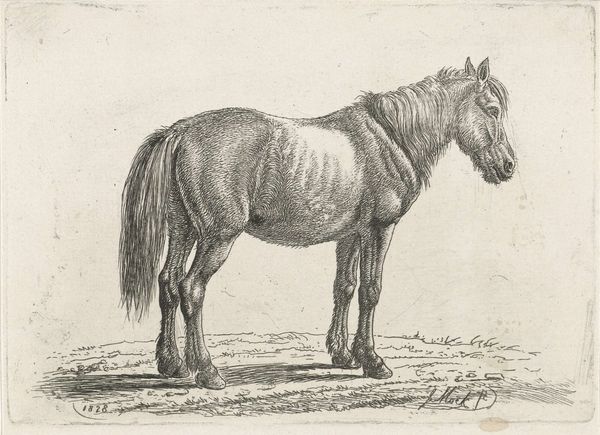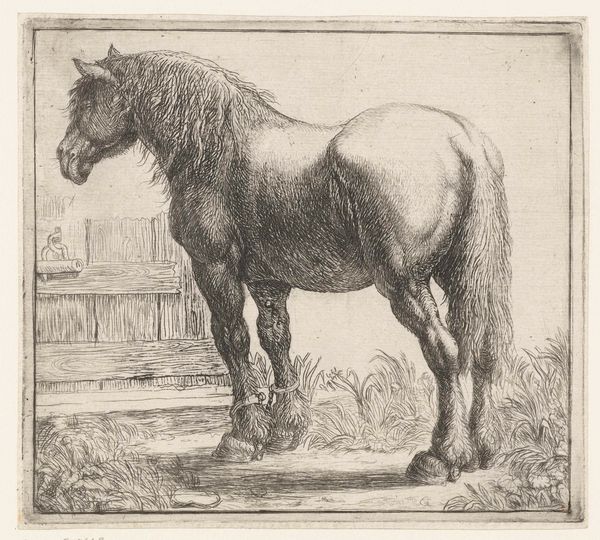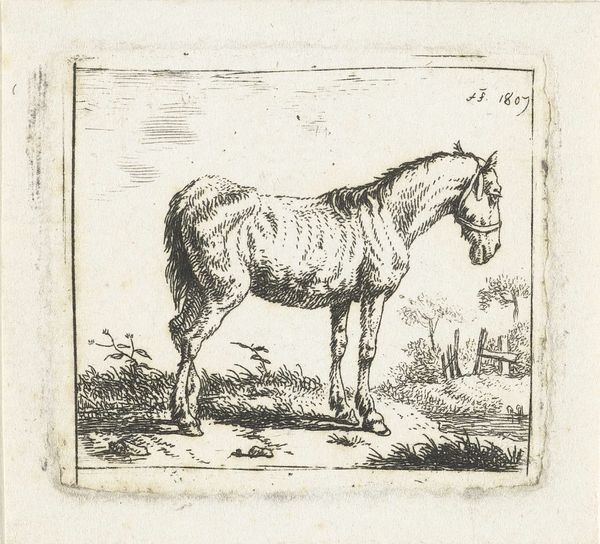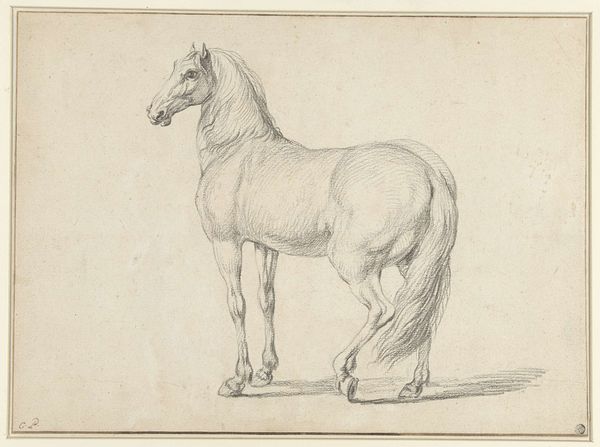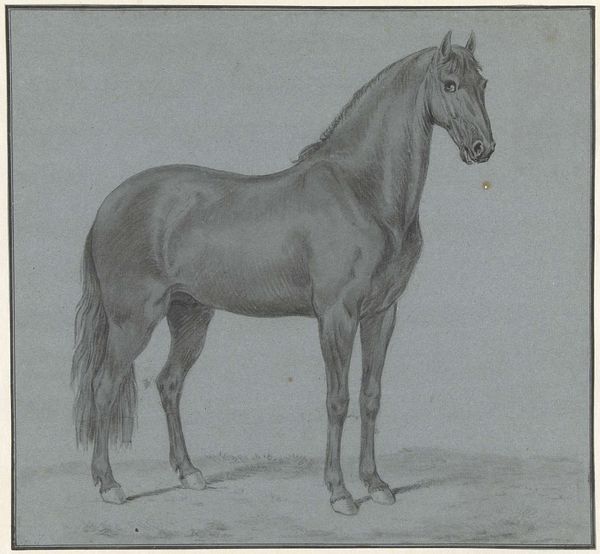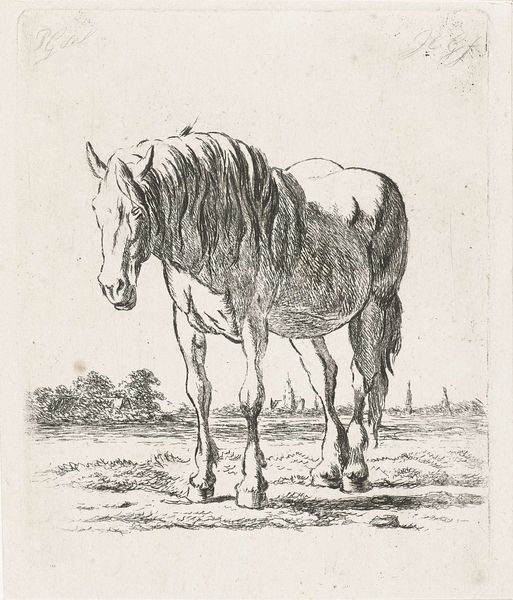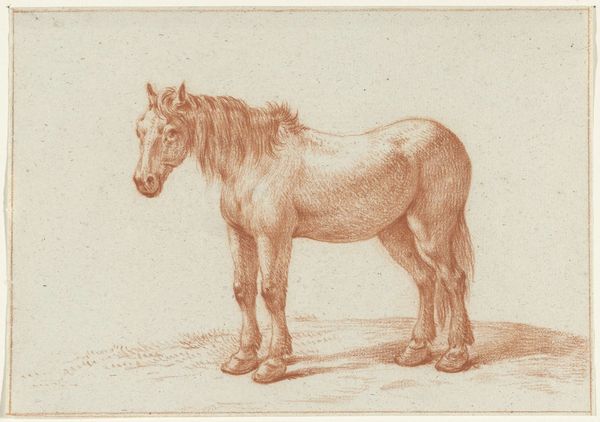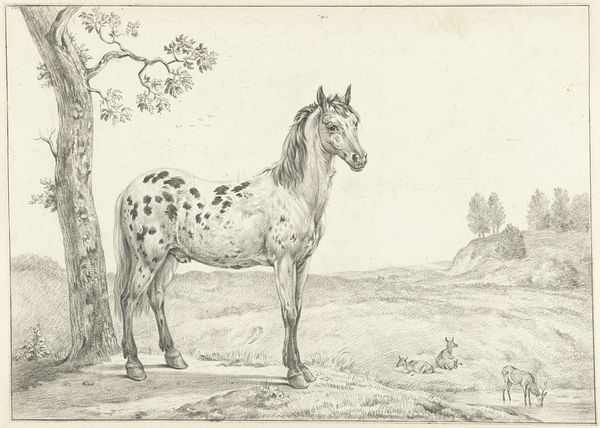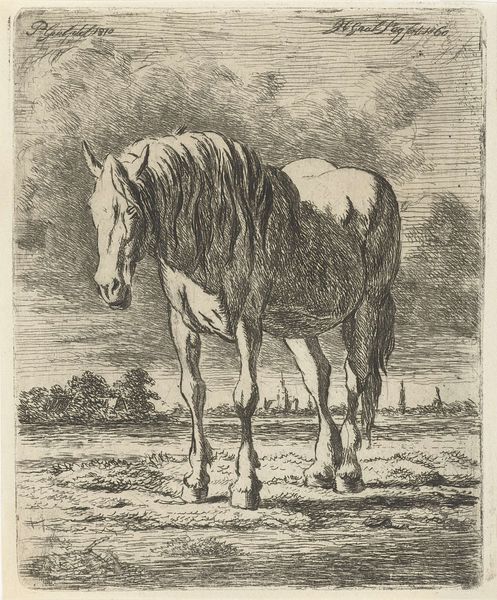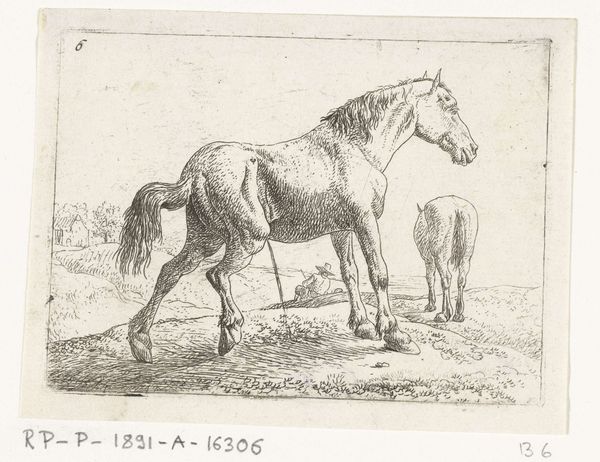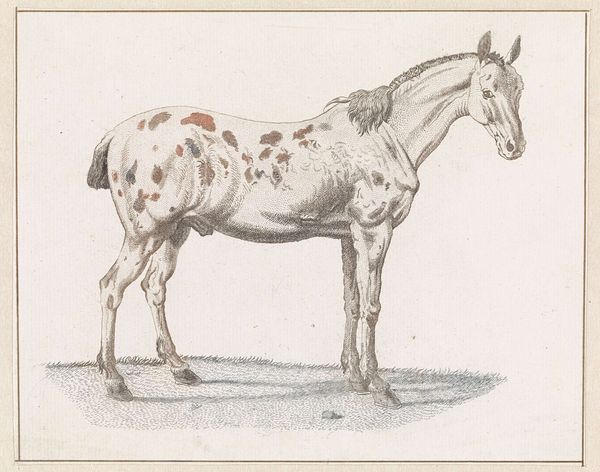
drawing, ink, pen
#
drawing
#
pen sketch
#
pencil sketch
#
landscape
#
figuration
#
ink
#
romanticism
#
horse
#
pen
#
genre-painting
#
realism
Dimensions: height 192 mm, width 273 mm
Copyright: Rijks Museum: Open Domain
Editor: Here we have "Two Horses in a Meadow, with a Rider on the Right," created sometime between 1806 and 1872 by Anthony Jacobus Offermans. It’s an ink and pen drawing. The mood seems relaxed, pastoral, even a bit melancholy given the muted tones. What strikes you about this piece? Curator: Well, let’s think about the context. Drawings like this were often studies. Consider the materials: pen and ink, relatively inexpensive and easily portable. Offermans, here, is likely investigating form, musculature, light, as a precursor to a larger painting or print. Notice how the materiality—the very application of ink—defines volume. Editor: So, it’s less about the finished artwork, and more about the artist’s process? Curator: Exactly. Think about the labor involved. Each line, each wash, is a conscious decision, a build-up of marks contributing to the final image. This act of 'building' the form is also inherently linked to Romanticism. We are dealing with both the external likeness, and internal experience. Editor: That makes me consider the choices of the subject itself. Horses weren’t just aesthetic subjects back then; they were also key to the agricultural and military complex of labor. Curator: Precisely! They were literally the engines of the age. Offermans has represented that. In capturing horses, they're capturing a key facet of Dutch economic and social life. So it might seem charming or represent something "natural", but we are always observing that through an idealized and human framework. Editor: So looking closely at what something is made of, can help us understand its function. Curator: Yes, understanding the material underpins a great deal of what we find and feel within the piece. We can reframe our interpretation as a function of its tangible process and resources, its place of 'origin', almost. Editor: I never considered that drawings were products of larger systems, too. Thank you for offering that perspective. Curator: My pleasure!
Comments
No comments
Be the first to comment and join the conversation on the ultimate creative platform.
